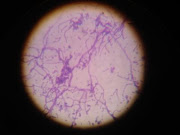Upendra
Thapa Shrestha1,2,3, Nabaraj Adhikari1,3, Samarpan Kafle3,
Nabaraj Shrestha4, Megha Raj Banjara1, Katie Steneroden5,
Richard Bowen5, Komal Raj Rijal1, Bipin Adhikari6,
Prakash Ghimire1
1Central
Department of Microbiology, Tribhuvan University, Kirtipur, Nepal
2Research
Laboratory for Biotechnology and Biochemistry, Sanepa, Lalitpur, Nepal
3Department
of Microbiology, Kantipur College of Medical Science, Sitapaila, Nepal
4Regional
Directorates of Livestock Services, Birendranagar, Nepal
5Department
of Biomedical Sciences, Colorado State University, Fort Collins, Colorado, USA
6Mahidol Oxford
Tropical Medicine Research Unit, Faculty of Tropical Medicine, Mahidol
University,
Bangkok, Thailand
ABSTRACT
Background: In Nepal, knowledge of proper handling, management and
causes of cattle diseases is still limited. The main objective of this study
was to explore the impact of deworming on milk production and its effect on
milk qualities.
Methods: A total of 200 faecal samples (100 buffaloes and 100 cows)
were collected and analysed for parasitic burden. Half of the infected cattle
(buffaloes, Bos bubalis; cow native, B. indicus; European, B.
taurus) were then dewormed with Levamisole Hydrochloride-Oxyclozanide
bolus, and the remaining 50 per cent were left untreated. The milk yield from
both infected and dewormed cattle was recorded for 30 days and the qualities of
milk were analysed.
Results: The prevalence of parasitic infection was found to be 22.0
per cent. Fasciola hepatica was the predominant parasite (81.8 per
cent), followed by Toxocara vitulorum (34.1 per cent), Strongyloides
papillosus (6.8 per cent) and Bunostomum phlebotomum (4.5 per cent).
The average
milk yield (litre/day/cow) significantly increased, which was 1.22
litres per day for treated cows and 1.06 litres for treated buffaloes. The
intervention effect of deworming among cows was 0.79 (14.06 per cent increment)
and for buffaloes was 0.42 (8.32 per cent increment). After deworming the
infected cattle, the protein percentage was significantly improved in cows
(P=0.035), whereas the lactose percentage and solid percentage had increased
significantly in buffaloes (P=0.002 and P=0.028).
Conclusion: Antiparasitic treatment in cattle had positive effects on
milk qualities such as solid non-fat, lactose, solid percentage and total
protein percentage.
Citation: Thapa Shrestha U, Adhikari N, Kafle S, et al. Effect of
deworming on milk production in dairy cattle and buffaloes infected with
gastrointestinal parasites in the Kavrepalanchowk district of central Nepal.
Veterinary Record Open 2020;7:e000380. doi:10.1136/ vetreco-2019-000380
Received 13 November 2019 Accepted 27 November 2019
Thapa Shrestha U, et
al. Vet
Rec Open 2020;7:e000380.
doi:10.1136/vetreco-2019-000380





















